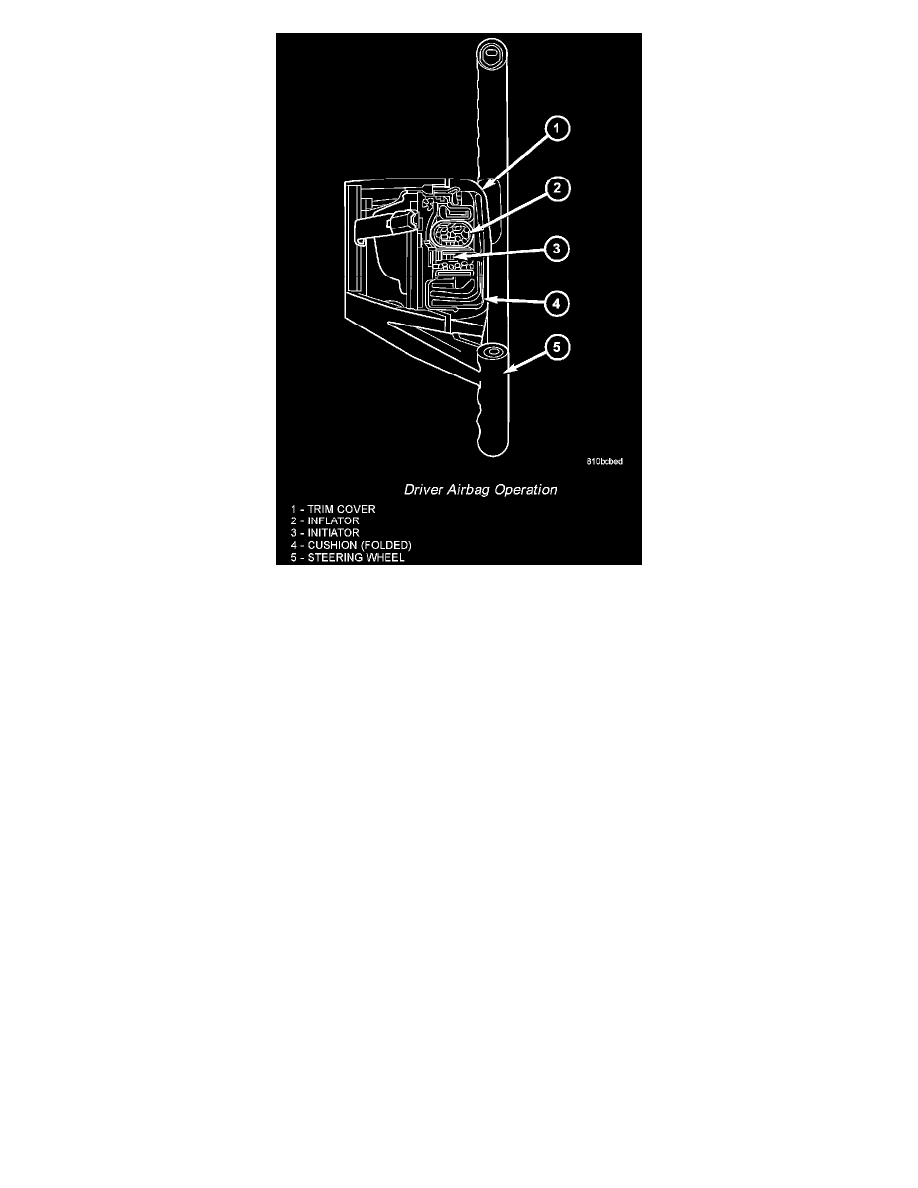Sprinter 3500 L5-2.7L DSL Turbo (2004)

Driver Airbag Operation
The driver airbag is deployed by electrical signals generated by the Airbag Control Module (ACM) through the driver airbag squib circuit to the initiator
in the airbag inflator. When the ACM sends the proper electrical signal to the initiator the electrical energy generates enough heat to initiate a small
pyrotechnic charge which, in turn, ignites chemical pellets within the inflator. Once ignited, these chemical pellets burn rapidly and produce a large
quantity of inert gas. The inflator is sealed to the back of the airbag housing and a diffuser in the inflator directs all of the inert gas into the airbag
cushion, causing the cushion to inflate. As the cushion inflates, the driver airbag trim cover will split at predetermined breakout lines, then fold back out
of the way. Following an airbag deployment, the airbag cushion quickly deflates by venting the inert gas towards the instrument panel through filtered
vents within the fabric used to construct the back (steering wheel side) panel of the airbag cushion.
Some of the chemicals used to create the inert gas may be considered hazardous while in their solid state before they are burned, but they are securely
sealed within the airbag inflator. Typically, all potentially hazardous chemicals are burned during an air-bag deployment event. The inert gas that is
produced when the chemicals are burned is harmless. However, a small amount of residue from the burned chemicals may cause some temporary
discomfort if it contacts the skin, eyes, or breathing passages. If skin or eye irritation is noted, rinse the affected area with plenty of cool, clean water. If
breathing passages are irritated, move to another area where there is plenty of clean, fresh air to breath. If the irritation is not alleviated by these actions,
contact a physician.
